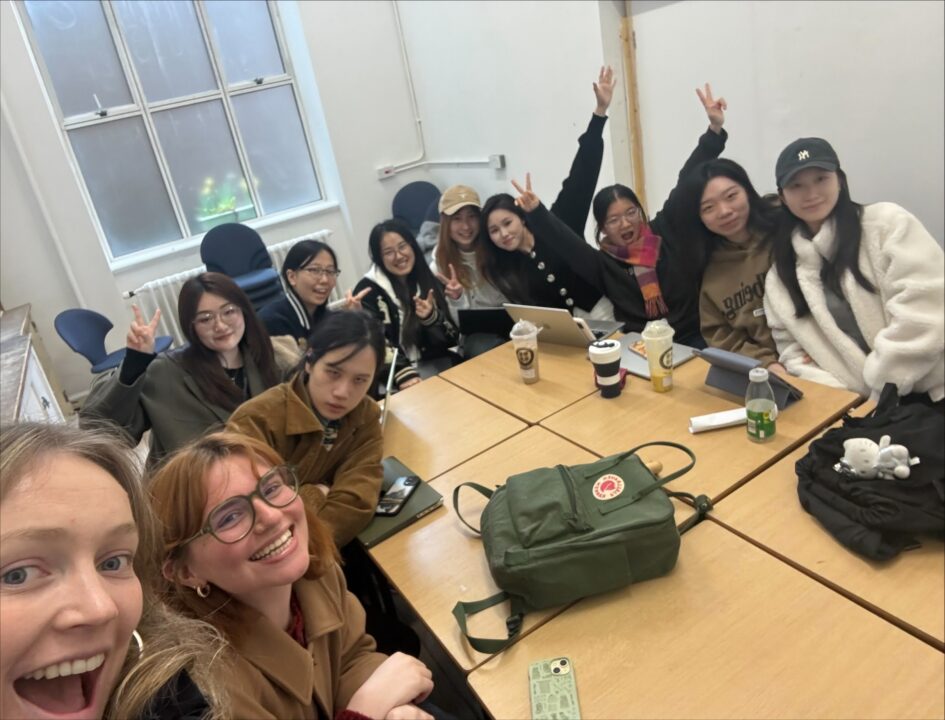Jiyun Zhang’s blog: Jiyun Zhang / Curating (2024-2025)[SEM2]
Jiyun’s blogs offer a comprehensive reflection that goes beyond the simple time record of curatorial research and exhibition visits, positioning itself as a critical commentary on contemporary exhibition practices and an introspective exploration of the author’s evolving curatorial identity. At its core, it delves into the complex relationship between exhibition viewing and conceiving personal curatorial projects, prompting a rethinking of how exhibitions can become both reflective and transformative experiences.
Advantages:
Jiyun has always emphasized the need to break away from traditional display methods. She advocates for exhibitions that are not confined to fixed spaces or conventional narrative structures, but rather celebrate those that integrate into the everyday, personal, and speculative. For instance, decentralized curation, by inviting the audience to become active participants and interact with artworks through dialogue, breaks the passive consumption of art. She also cited relevant examples such as “Sleep No More,” TeamLab, and Van Gogh. In the previous semester’s course, I also conducted some research on these three examples, so I can also have a better understanding of Jiyun’s exhibitions from my perspective. This approach is both a critique of traditional practices and a call to reimagine exhibitions as dynamic, interactive platforms that reflect the complexity of contemporary society.
I was also pleased to see jiyun thoughtful about the accessibility of the exhibition. In fact, accessibility is an important part of the success of an exhibition. We need to ensure an exhibition that everyone can participate in and understand.
Something needs improving:
However, in jiyun’s blog, I think there are some things that need to be changed as well.
- The plan of exhibition needs to be detailed and specific. As this exhibition requires a large number of electronic equipment and a large area of space, a large number of personnel are needed to support the normal operation of the exhibition. First of all, I think the site selection and site area of the exhibition should have a certain planning, and the quality and base of potential visitors should have a certain judgment. The exhibition needs to choose a big city with strong economic strength and a large enough exhibition venue.
- Secondly, the content of the exhibition needs to be further determined. The theme of this exhibition is immersive interactive film. I think in addition to digital technology, we should also consider the setting of film scripts, such as plot direction and duration.
- The third point is feasibility. Whether actors and electronic technology both need to exist, I think you can choose one or the other. The combination of immersive art and interactive film itself is a very complex topic. Whether to guide the audience to act in the established script branches or to organize the audience’s behavior and generate the outcome through AI is also a question that needs to be considered.
By visiting Juyun’s blog, I also learned something new about my exhibition. First, I should think about the accessibility aspects of the exhibition to ensure that everyone can enjoy the exhibition. Secondly, I have not learned enough about other exhibitions. I should acquire more knowledge and apply it to my own exhibitions during the exhibition.
Examples:
1. secret cinema Secret Cinema
2. Horizon of Khufu: An immersive VR experience
Bibliography:
Engebakken, Ingvild Eydis. “teamLab Borderless On Value and Experience Today,” 2023.
Atkinson, Sarah, and Helen W Kennedy. Secret Cinema and the Immersive Experience Industry. Manchester: Manchester University Press, 2022.



Leave a Reply